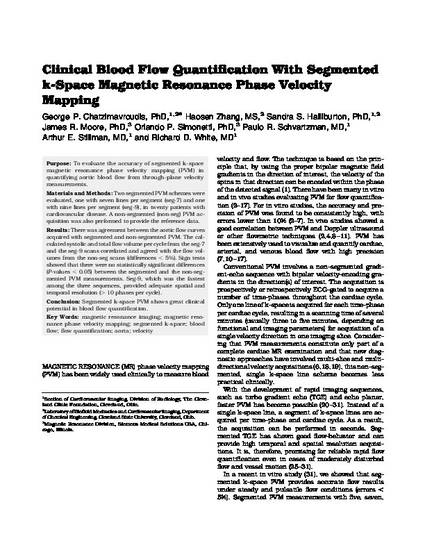
To evaluate the accuracy of segmented k-space magnetic resonance phase velocity mapping (PVM) in quantifying aortic blood flow from through-plane velocity measurements.
Two segmented PVM schemes were evaluated, one with seven lines per segment (seg-7) and one with nine lines per segment (seg-9), in twenty patients with cardiovascular disease. A non-segmented (non-seg) PVM acquisition was also performed to provide the reference data.
There was agreement between the aortic flow curves acquired with segmented and non-segmented PVM. The calculated systolic and total flow volume per cycle from the seg-7 and the seg-9 scans correlated and agreed with the flow volumes from the non-seg scans (differences < 5%). Sign tests showed that there were no statistically significant differences (P-values < 0.05) between the segmented and the non-segmented PVM measurements. Seg-9, which was the fastest among the three sequences, provided adequate spatial and temporal resolution (> 10 phases per cycle).

Presented at the 10th Annual Meeting of the International Society for Magnetic Resonance in Medicine, Honolulu, 2002.